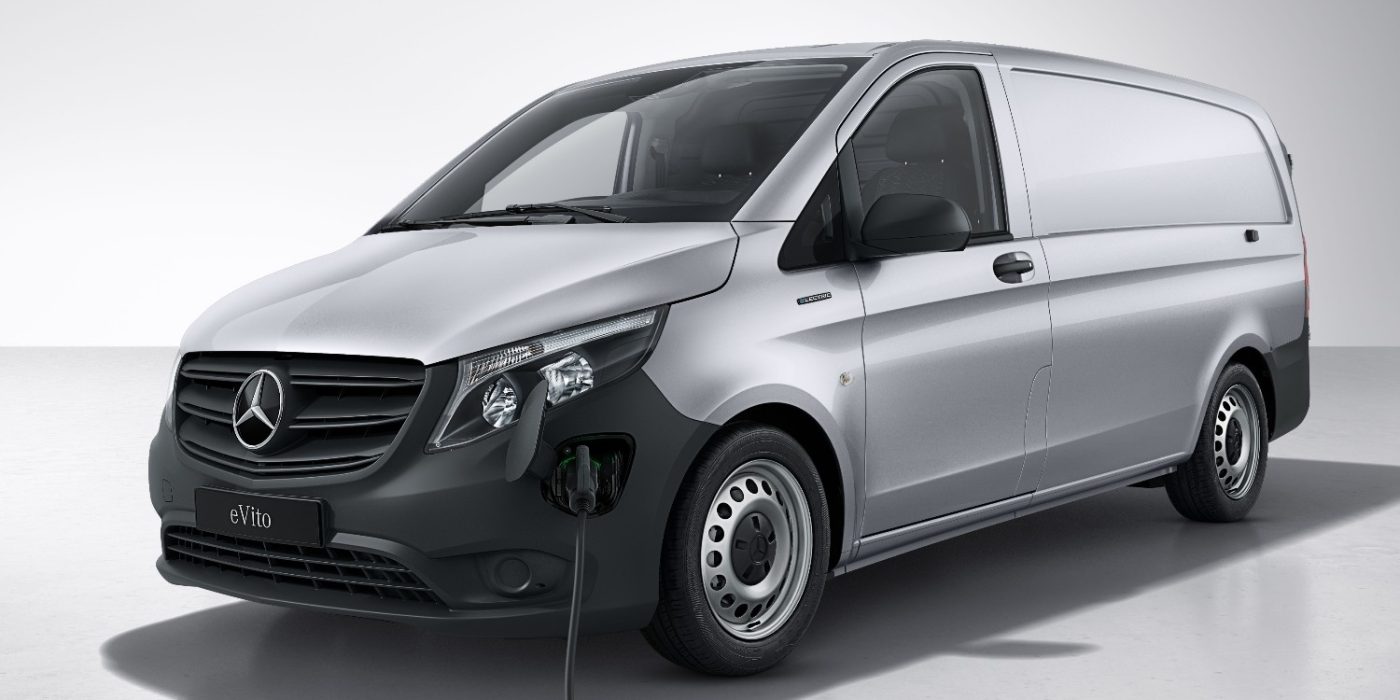Mercedes-Benz eVito van gets new powertrain
Mercedes-Benz has unveiled a comprehensive upgrade of the electric drivetrain (eATS) in the eVito electric van. The battery capacity increases by 70 per cent to now 60 kWh. In addition, the panel van gets a DC fast charging function ex-works.
To recapture, previously the Mercedes-Benz eVito van came in two versions, the eVito panel van, designed for tradesmen and last-mile logisticians, previously only had a 41.4 kWh battery (150 to the 186-kilometre range) and an AC-only charging solution. In 2020, however, the revised eVito Tourer received the drive system from its passenger car counterpart, the EQV: The e-motor produces 150 kW, while the 90 kWh (net) battery enables the higher range of up to 421 kilometres according to NEDC for passenger transport such as ride-hailing or the official environment, and a DC charging power of up to 110 kW. Then, in early October, Mercedes announced a smaller battery with 60 kWh net for the EQV and eVito Tourer.
For the new eVito panel van, Mercedes-Benz Vans is drawing precisely on this range modular system. Unlike the eVito Tourer, it retains its 85-kW asynchronous engine (70-kW continuous output) and does not switch to the 150-kW engine. Instead of the 41.4 kWh battery, the panel van will also feature the 60-kWh-battery in future; the gross figure is 66 kWh. The larger 90-kWh battery is unavailable, even at an extra cost. For daily use in the CEP sector with overnight depot charging, 242 to 314 kilometres according to WLTP (instead of the maximum 186 kilometres mentioned above) will presumably suffice even for most operations in unfavourable weather conditions.
The eVito panel van also follows the Tourer’s data in terms of charging power: 50 kW DC charging power is standard, and for an additional charge, the eVito panel van can charge at up to 80 kW. The charging time from ten to 80 per cent is 50 or 35 minutes. In addition, the water-cooled AC onboard charger enables three-phase charging at 11 kW.
Recovery can be adjusted via the paddle shifters on the steering wheel. A new feature in the panel van is the D-Auto level, which is familiar from other electric passenger car models from Mercedes. The system uses information from various sensors and safety systems to determine how much energy flows back into the battery or how much the vehicle decelerates depending on the situation. This is intended to support anticipatory and energy-saving driving.
Speaking of energy-saving driving: Ex-works, the eVito panel van is delivered with a top speed of 80 km/h. However, 100 or 120 km/h are also available as options.
Since the 60 kWh battery is also installed in the underbody as before, the load volume of up to 6.6 cubic meters remains. This value is achieved by the extra-long version with an overall length of 5.37 meters; alternatively, the extended version with 5.14 meters is available. Here, the cargo space holds a maximum of 6.0 cubic meters. However, one restriction with the larger (and somewhat heavier) battery is that the maximum payload is no longer 1,016 kilograms, but 888 kilograms 8(53 kilograms for the extra-long version). In practice, however, the impact should be minor since it is the load volume rather than the payload that is decisive, especially in the parcel sector.
The eVito panel van starts at 45,990 euros net in terms of price. In addition, a four-year maintenance package covers the cost of maintenance work during this period per the service booklet and manufacturer specifications and the Mercedes-Benz battery certificate for up to 160,000 kilometres or eight years.
With reporting by Sebastian Schaal, Germany.





0 Comments